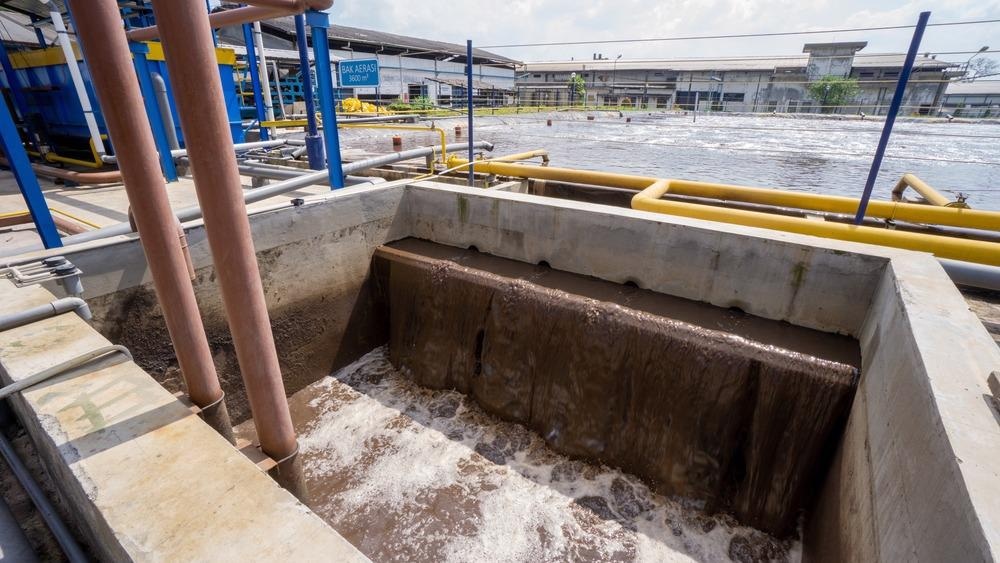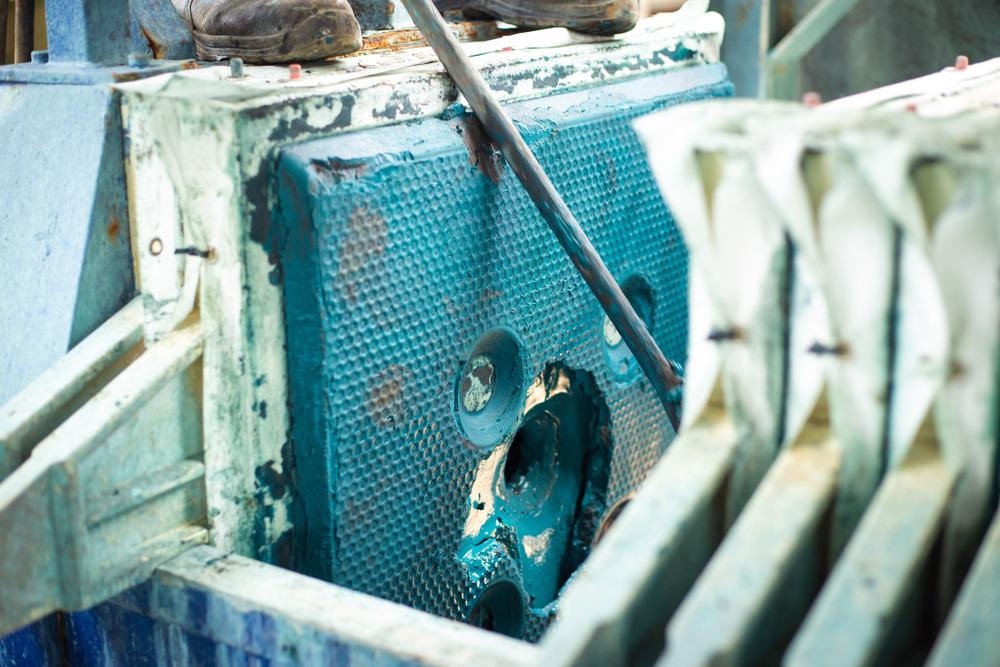The growing textile industry is one of the world’s largest producers of solid waste, which requires significant levels of treatment before it can be disposed of. Establishing the final destination of such waste products has become a big problem for modern society, particularly due to the environmental issues associated with textile sludge disposal.

Large wastewater treatment pond of a textile company. Image Credit: Rizki Sams/Shutterstock.com
Now, scientists are exploring the idea of converting waste from the textile sector into materials for the ceramics industry. It is hoped that, via this method, the environmental impact of the textile industry will be reduced and a sustainable source of materials will be established for the ceramics industry.
The Growing Textile Industry Poses an Increasing Environmental Health Issue
Over recent years, the global textile industry has been continuing to grow, with total volumes produced and textile exports both increasing steadily. In 2015, the global textile mill market was valued at roughly $667.5 billion, representing a 1.5% increase from the previous year. From 2015 to 2020, it is estimated that this market value grew by a huge 26.2%.
Waste from the textile industry presents a major environmental issue. Wastewater and sludge produced as a byproduct from processes such as laundering manufactured clothes as well as dying must be treated before it can be disposed of, as it contains various chemical compounds necessary to the multiple stages of textile processing. Studies show that 10% to 25% of textile dyes are released into the environment during the dying process. Without treatment, the chemicals in these dyes can remain in the environment for a significant period.
Unfortunately, the textile industries in many countries are disposing of textile sludge waste without treating it first. This means that the sludge, containing various toxic compounds such as heavy metals and other components including aluminum, chlorides, organic carbon, iron, manganese, magnesium, and phosphorus, is entering the world’s ecosystems in vast quantities.
The full effect of this dumping is not fully understood, although research shows that it negatively impacts soil biodiversity, contributes to greenhouse gas emissions, and leads to human and animal health risks.
To put into perspective how much textile sludge is produced each day, one study found that a single industrial laundry (in Brazil) produces 280kg of sludge a day, equating to just under 6,000kg a month.
Now, scientists are investigating how to tackle this problem by converting waste sludge into a useful material for which there is high enough demand to make use of the vast quantities of textile sludge being produced each year.
Converting Textile Sludge Waste Into Safe, Usable Materials
In 2014, scientists at Universiti Teknologi MARA (UiTM), Malaysia, developed a method of converting water treatment sludge into materials for use in ceramics. Their method involved burning off organic substances while containing dangerous heavy metals within the resultant material. The study showed how waste sludge could be converted into useful, harmless material, thus addressing the environmental issues related to disposing of sludge.
Now, scientists in Brazil have come up with a similar solution for textile sludge waste. The objective of the work, which was published in the Journal of Building Engineering, was to evaluate the feasibility of converting textile sludge into raw material for the traditional ceramic industry.

Industrial filter press of wastewater treatment plant with chemicals sludge treatment. Image Credit: Ph.wittaya/Shutterstock.com
The team showed that the ceramic porosity of the resultant material was enhanced by the naturally high levels of organic matter present in the textile sludge. This composition also resulted in a high loss of ignition and increased the water absorption and firing linear shrinkage of the new material. Finally, the resultant material was found to be low in mechanical strength.
However, while the materials demonstrated impaired properties, the values of such properties met the standards outlined by Brazilian regulatory bodies for materials used for bricks. Therefore, the material converted from textile sludge can be used as material for traditional ceramics.
Additionally, during the volatilization of the organic compounds, the heat released was theorized to contribute to the energy-saving observed during the ceramic firing stage. Finally, the materials produced were assessed in terms of their environmental safety. It was concluded that the use of the converted waste as a material for traditional ceramics was not damaging to the environment.
The work conducted in Brazil is an important step in the development of processes that can safely dispose of textile waste sludge, an issue that currently poses a significant global environmental threat. The research demonstrates that it is possible to use textile waste sludge to produce clay bricks.
It is likely that the methodology laid out in their research paper will promote the development of other techniques for converting textile waste sludge, so that hopefully, in the near future, the textile industry can become significantly more sustainable and environmentally friendly as well as reduce its carbon footprint.
These methodologies will be important for the future of the planet, not just for the texture industry. Demonstrating new ways to overcome environmental threats adds to our arsenal of techniques that might be suitable for developing to tackle similar issues in different industries.
References and Further Reading:
(2014). Eco-pottery product from water treatment sludge. [Online]. Science Daily. Available at: https://www.sciencedaily.com/releases/2014/07/140723180721.htm (Accessed 25 October 2021)
Beshah, D.A., Tiruye, G.A. & Mekonnen, Y.S., 2021. Characterization and recycling of textile sludge for energy-efficient brick production in Ethiopia. Environmental Science and Pollution Research, 28(13), pp.16272–16281. https://link.springer.com/article/10.1007/s11356-020-11878-7#citeas
Girondi Delaqua, G.C. et al., 2021. Incorporation of sludge from effluent treatment plant of an industrial laundry into heavy clay ceramics. Journal of Building Engineering, p.103451. https://www.sciencedirect.com/science/article/abs/pii/S2352710221013097#!
Disclaimer: The views expressed here are those of the author expressed in their private capacity and do not necessarily represent the views of AZoM.com Limited T/A AZoNetwork the owner and operator of this website. This disclaimer forms part of the Terms and conditions of use of this website.